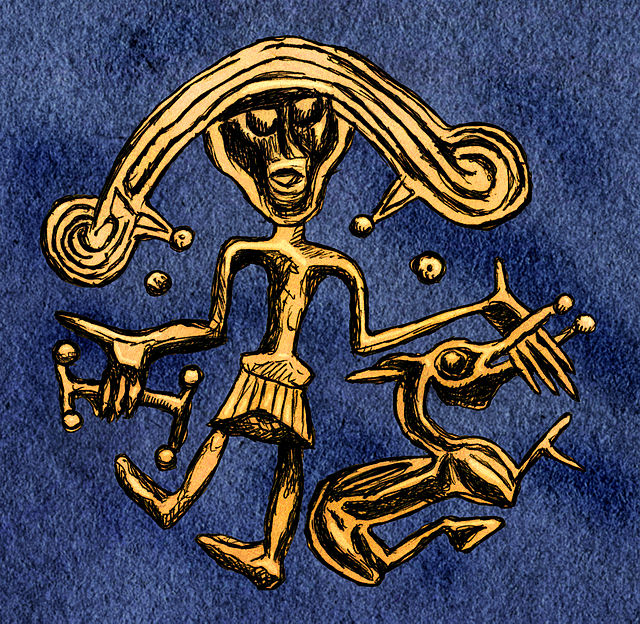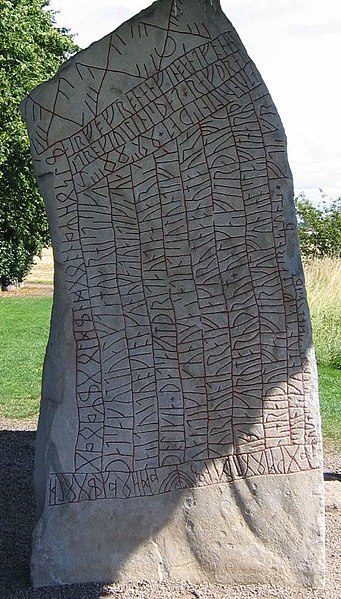Fenrir or Fenrisúlfr, also referred to as Hróðvitnir and Vánagandr, is a monstrous wolf in Norse mythology. In Old Norse texts, Fenrir plays a key role during the events of Ragnarök, where he is foretold to assist in setting the world aflame, resulting in the collapse of humanity and society, and kill the god Odin.
Fenrir and Naglfar on the Tullstorp Runestone. The inscription mentions the name Ulfr ("wolf"), and the name Kleppir/Glippir. The last name is not fully understood, but may have represented Glæipiʀ which is similar to Gleipnir which was the rope with which the Fenrir wolf was bound. The two male names may have inspired the theme depicted on the runestone.
An illustration of an image on a bracteate found in Trollhättan, Västergötland, Sweden. The image is considered as a depiction of Týr tricking Fenrir. Drawing by Gunnar Creutz.
Fenrir and Odin (1895) by Lorenz Frølich
An illustration of Víðarr stabbing Fenrir while holding his jaws apart (1908) by W. G. Collingwood, inspired by the Gosforth Cross
Norse, Nordic, or Scandinavian mythology, is the body of myths belonging to the North Germanic peoples, stemming from Old Norse religion and continuing after the Christianization of Scandinavia, and into the Nordic folklore of the modern period. The northernmost extension of Germanic mythology and stemming from Proto-Germanic folklore, Norse mythology consists of tales of various deities, beings, and heroes derived from numerous sources from both before and after the pagan period, including medieval manuscripts, archaeological representations, and folk tradition. The source texts mention numerous gods such as the thunder-god Thor, the raven-flanked god Odin, the goddess Freyja, and numerous other deities.
The Tjängvide image stone with illustrations from Norse mythology
The god Loki, son of Fárbauti and Laufey
The Rök runestone (Ög 136), located in Rök, Sweden, features a Younger Futhark runic inscription that makes various references to Norse mythology.
Title page of a late manuscript of the Prose Edda written by Snorri Sturluson (13th century), showing the Ancient Norse Gods Odin, Heimdallr, Sleipnir, and other figures from Norse mythology








